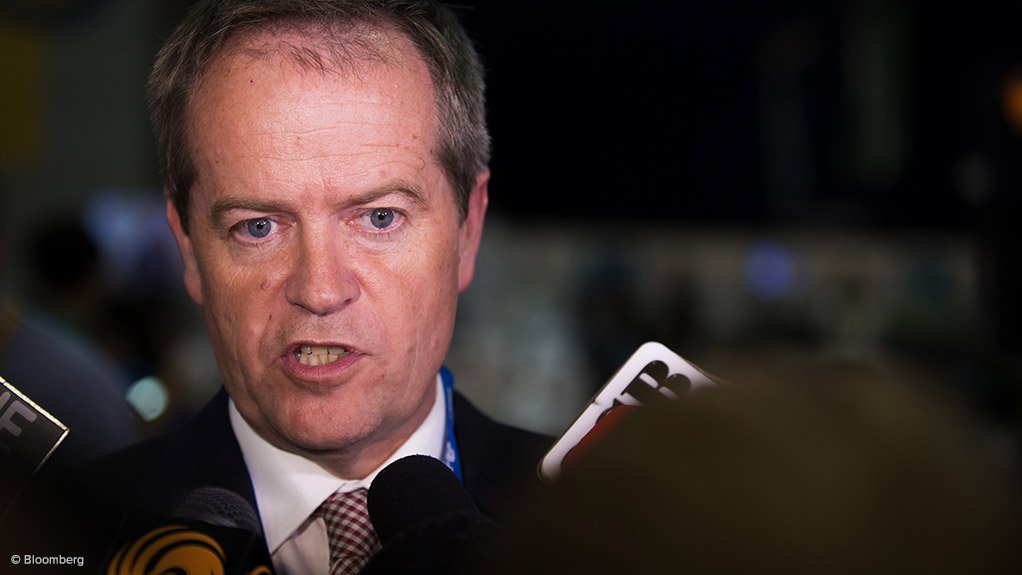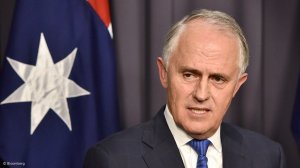CANBERRA – Australia is heading to elections on July 2 to determine which party will steer the economy through a fading mining investment boom and a deterioration of public finances. Seeking a second term for his Liberal-National coalition, Prime Minister Malcolm Turnbull says he’s best-placed to create new growth drivers through innovation and tap into growing Chinese demand for Australian services such as tourism and education.
QUICK TAKE IRON-ORE WARS
Turnbull, 61, also wants to draw a line under almost a decade of unprecedented political instability that’s seen Australia churn through six prime ministers since 2007. The former investment banker is being challenged by one-time trade union leader Bill Shorten, 49, who leads the main opposition Labor party.
WHAT'S AT STAKE
The coalition and Labor have fought the eight-week campaign in the political center. Turnbull is pledging company tax cuts and tweaks to the nation’s retirement savings system. Shorten is promising more spending on education and health, an inquiry into the integrity of the banking system, and to remove tax perks for landlords that have seen home prices surge out of reach of many Australians.
AUSTRALIA IN NUMBERS
50 000: The number of jobs National Australia Bank forecasts the mining industry will lose as the resources boom continues to unwind. Most of those losses will come in Western Australia, whose unemployment rate is forecast to rise past the national average next year.
$52: The price of iron-ore per metric ton. The steelmaking ingredient, the nation’s biggest export, has plunged 73% since February 2011 amid a slowdown in demand from China, placing pressure on Australia’s tax revenues. Services exports are starting to pick up the slack, outpacing metal ores and minerals since December.
79%: The surge in the Sydney house price index since the end of 2008, which has helped underpin growth in the state of New South Wales. In Perth, the capital of Western Australia, values climbed only 18% in the same period, and have dropped 4.5% since the end of 2014 as the mining boom waned.
18.9%: The record level that Australia’s net debt to GDP ratio is forecast to reach in the year to June 30, 2017.
76: The number of seats in the 150-member lower house needed to form majority government. Labor, which won 55 seats in the 2013 election, has a mountain to climb to win office, while the coalition has a comfortable buffer at 90. Opinion polls indicate Turnbull is likely to be re-elected, albeit with a reduced majority.
THE MEN WHO WOULD BE PRIME MINISTER
Malcolm Turnbull
The nation’s 29th prime minister has worked as a journalist, was legal counsel to billionaire media mogul Kerry Packer, defeated the British government in the Spycatcher case, and built a personal fortune as an investment banker. After leading the failed campaign for Australia to become a republic in the late 1990s, Turnbull entered Parliament in 2004, led the Liberal Party in opposition for a little over a year and served as communications minister before successfully challenging Tony Abbott for the leadership last September.
Bill Shorten
The son of an English waterside worker, Melbourne-born Shorten was drawn into Labor politics as a university student and headed the powerful Australian Workers’ Union. After entering parliament in 2007, Shorten held portfolios including minister for education, workplace relations and financial services. He was a seen as a kingmaker amid the chaos that saw the leadership switch from Kevin Rudd to Julia Gillard and back again. Shorten became opposition leader after Labor lost the 2013 election.
Edited by: Bloomberg
EMAIL THIS ARTICLE SAVE THIS ARTICLE
To subscribe email subscriptions@creamermedia.co.za or click here
To advertise email advertising@creamermedia.co.za or click here















